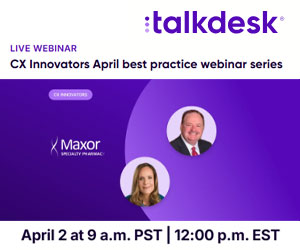Attila Kendefi of VCC Live shares ten examples of call centre metrics that can be used to measure performance success.
When running a call centre, call centre metrics are important, crucial even, to have a clear sense of how your company is performing.
- Are things going well?
- How could practices and tactics be improved?
- What areas are you falling short in?
In order to clearly answer these questions, you need points of reference: in other words, you need to look at the most important metrics.
There are, of course, a myriad of possible data points and questions that one could use as contact centre metrics.
Within the limited space of this blog, however, we will concentrate on ten call centre metrics to track.
Keeping these in mind will help you improve and find paths to greater success!
1. Customer Satisfaction
It should go without saying that the satisfaction of your customers is essential. An unhappy, or unsatisfied, customer can quickly become a lost one.
For that reason, it’s crucial to get a holistic overview of the customer’s call experience, in order to gain a better understanding of what direction to take your call centre in.
Given that this metric is a relatively abstract one, there is no uniform way of calculating customer satisfaction.
Rather, it can be roughly estimated, based on the outcomes of post-call satisfaction surveys, together with data about customer loyalty and retention.
2. Average Wait Time (Time in Queue)
Often closely related to a customer’s satisfaction, this call centre metric is quite simply the amount of time customers had to wait before speaking to an agent.
Derived, as its name suggests, from an average of the days’ calls’ queue times, the average wait time is a very useful data point.
If you find that customers are waiting in queues for a particularly long time, you can move to address this issue with your team, before it begins to negatively impact customer satisfaction.
3. Average Answer Speed
Another average, this metric tells you how long it takes your agents to complete a call within a given time frame.
If it’s taking an especially long time for agents to resolve a call, this is an issue worth looking into.
The issue could be as simple as problems with your interface, which could be resolved, for example, through a more efficient call centre software.
4. Average Handle Time
Slightly different than average answer speed, handle time is a measure of how long an agent is on a call, from beginning to end. This is a very valuable metric.
If the calls are taking longer than they should, it’s possible that, for example, your agents are in need of more information.
Similarly, an agent with a surprisingly short handle time might be excessively curt, or simply hanging up on customers entirely.
5. Average After Call Work Time
After your agent completes a call, he or she will need to spend time entering data about the interaction.
While it’s important to maximize your agents’ call time, you should also be sure, when looking at this metric, to give them enough time to fill out paperwork properly.
6. Average Call Abandonment Rate
One of the most important call centre metrics is average call abandonment rate. In other words, the number of customers hanging up the phone even before speaking to an agent.
It is crucial to keep this rate low, as a customer who hangs up in frustration is unlikely to be a satisfied one.
7. Occupancy Rate
Like many other call centre metrics, “occupancy rate” is an attempt to track agent productivity.
In particular, looking at occupancy rate gives an overview of how much time agents spend on all call-related activities, from answering the phone to filling out paperwork. It is a measure of overall efficiency, one that needs to be balanced with questions of agent workload and stress.
8. Self-Service Accessibility and Quality
To put it simply, this metric measures the efficiency of your automated answering system (such as your IVR). Is it meeting your customers’ needs, or leaving them angry, frustrated, and lost?
A brief survey at the end of an automated call can allow you to get valuable feedback here.
9. Percentage of Calls Blocked
This is another relatively straightforward metric: how many customers receive a busy tone when they attempt to call you?
Obviously, this is one metric that you should do your best to keep as low as possible.
Keep in mind possible causes keeping this number high; such as an inadequate number of agents, or possible software issues.
10. Agent Turnover Rate
Finally, call centre metrics should include an analysis of your agents’ turnover rate. If your agents are constantly quitting to find jobs elsewhere, then it’s unlikely that they’re happy. And, naturally, unhappy agents are unlikely to lead to optimal interactions with customers.
Keep your agents happy, and you’ll keep your customers satisfied as well!
This news story has been re-published by kind permission of VCC Live – View the original post
For more information about VCC Live, visit: www.vcc.live
Author: Guest Author
Published On: 4th Feb 2021
Read more about - Guest Blogs, VCC Live



































